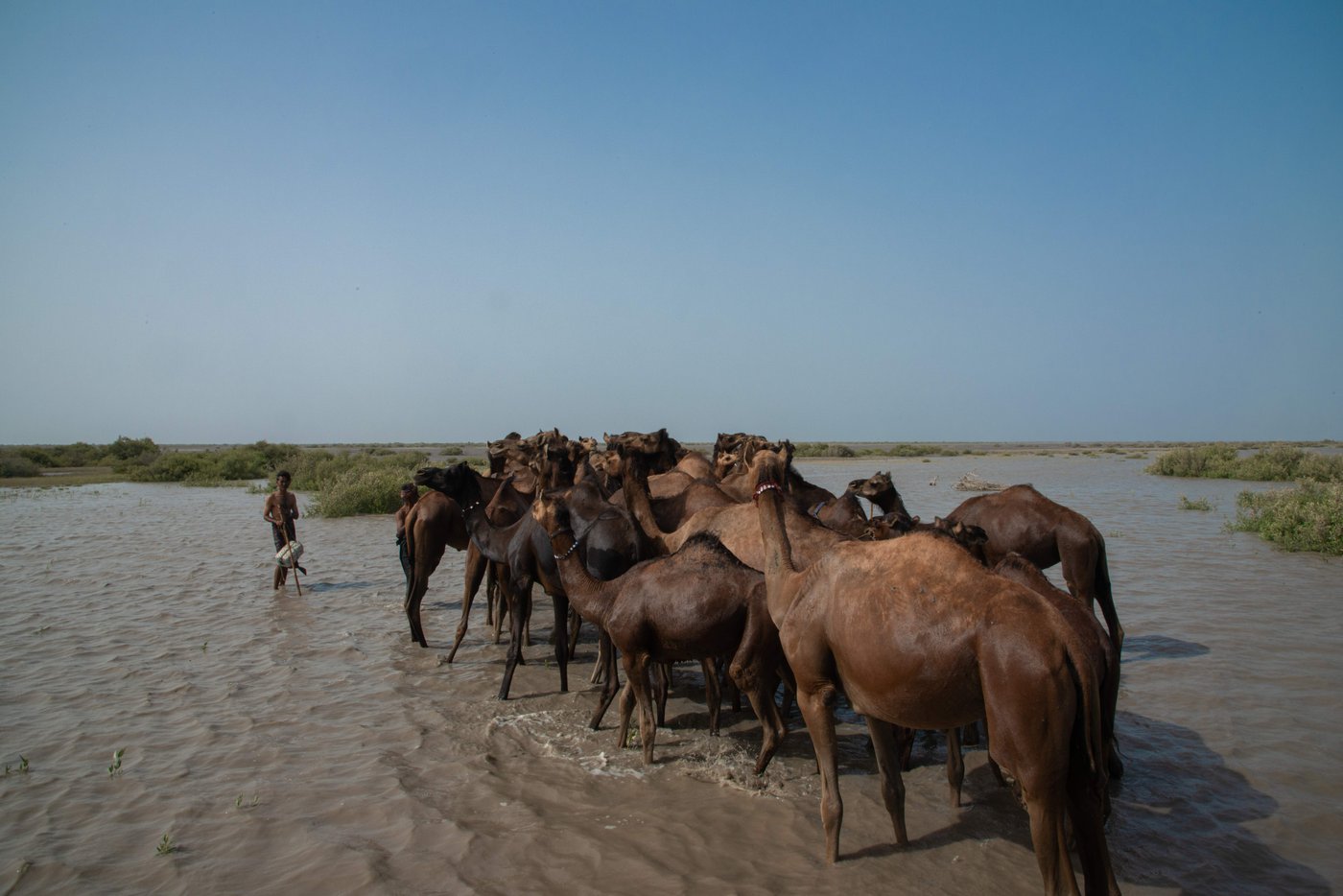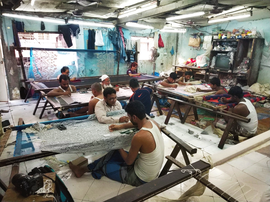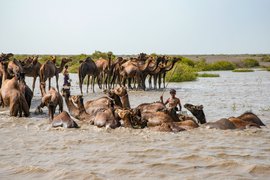“My grandfather had 300 camels. Now I have only 40. The others died...they weren’t allowed to go in the sea,” says Jethabhai Rabari. He herds the camels of the sea in Beh village of Khambhaliya
taluka
. The animals belong to an endangered breed called Kharai that is acclimatised to the coastal ecozone in Gujarat. The camels swim for hours looking food in the mangroves of the Gulf of Kachchh.
Kharai camels have been herded by Fakirani Jat and Bhopa Rabari communities since the 17th century along the southern shore of the Gulf, where the Marine National Park and Sanctuary is now located. But a ban on grazing inside the marine park, imposed in 1995, has threatened the survival of the camels and their herders.
These camels need cher (mangrove), says Jethabhai. Mangrove leaves are an essential component of their diet. “Won’t they die if they aren’t allowed to eat the leaves?” asks Jethabhai. But if the animals go to the sea, he says, “the marine park authorities fine us and seize our camels, and confine them.”
In this film, we see the camels swimming in search of mangroves. The herders narrate their difficulties in keeping them alive.
A film by Urja
Cover photo: Ritayan Mukherjee
Read also: Jamnagar’s ‘swimming camels’ in deep waters



